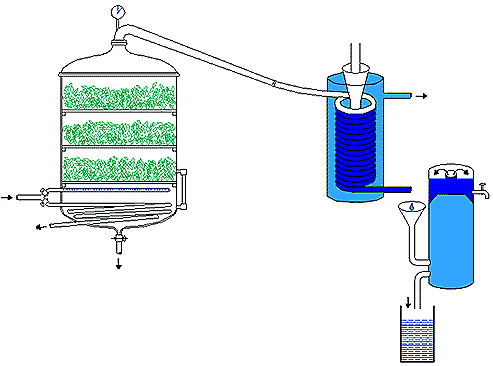
|
5.2. Hydrodistillation
This has been the main method of flavour extraction. This is also the official standard method for extracting essential oils for quality control. In this standard method the distillation procedure is closely defined vegetable products, according to the reference method indicated in the standard is done with steam distillation, collecting the distillation product in xylene.
During hydrodistillation the essential oil components form an azeotropic mixture with water. Most of the essential oils do not mix well with water in the liquid phase so after condensation, they are separated by decantation.
The distillation period can take from 15 to 30 minutes or longer (Peyron and Richard, 1992). The extraction period influences not only the yield but also the extract composition. Hydrodistillation can be achieved by one of the two methods:In both methods the vapours of the volatile components are carried by the steam to a condenser. On condensation oil-rich and water-rich layers are formed. These are separated by decantation.
During both forms of hydrodistillition the sample is exposed to temperatures close to 100şC, which can load to changes in 'thermolabile' components. Prolonged heating in contact with water can lead to hydrolysis of esters, polymerisation of aldehydes, or decomposition of other components.
Hydrodistillation at elevated pressures is used with plants whose essential oils are difficult to extract. However due to the high temperatures used, the danger of decomposition is even higher. Hydrodistillation at reduced pressure is better because lower temperatures are used.

|